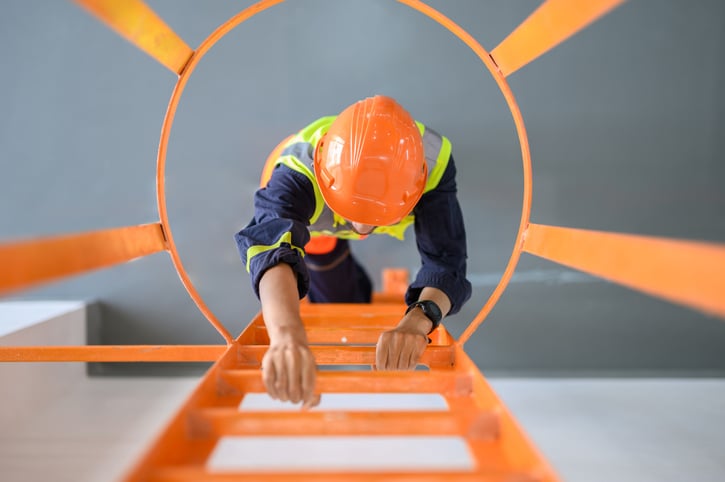AI: Helping Organizations with Health and Safety

Artificial intelligence (AI)-powered video analytics are being used to improve workplace safety.
They can identify ergonomic risks, monitor personal protective equipment (PPE) compliance and detect hidden hazards, thus reducing reliance on supervisors and enabling real-time interventions, says Donavan Hornsby, chief market strategy officer at Benchmark Gensuite, a Mason, Ohio-based environmental, health and safety solutions provider.
“A common saying you hear a lot is that a healthier, safer work environment is a more productive work environment,” he says. That’s only common sense: Having a safer working environment keeps people on the job producing and earning, limits downtime and cuts down on workers’ compensation costs, among other benefits.
Real-Time Feedback
In logistics, warehousing, manufacturing and other areas, muscular skeletal disorders from lifting boxes and moving equipment are among the biggest workplace health and safety implications. AI-powered video analytics can be used to video employees working on the job and identify and correct the ergonomics and safety issues in real time.
“It provides them feedback in real time as to how they can adjust their position and adjust the use of equipment in order to prevent risks,” Hornsby says. “In the old days — or even still for a lot of organizations — it depends on a supervisor walking around and noticing safety issues. Practically speaking, there aren’t enough supervisors to be able to do that.”
Video analytics also can be used to ensure employees are wearing the proper equipment —PPE like goggles or harnesses — and wearing it properly without having to rely on supervisors.
Preventing Safety Issues
For manufacturers and other companies, data analysis and AI-powered video analytics can be useful in preventing future safety issues.
Data can be leveraged to identify and prevent potential significant incidents and fatalities, enabling organizations to proactively implement controls across multiple sites.
He recommends looking at the conditions that led to significant incidents in the past and using AI to learn from that. “Also, let’s start taking a look at what we’re observing on a day-to-day basis now and identifying those incidents or those cases where something could have become much worse and use that information through AI analytics to identify things that could have gone wrong,” he says.
Hornsby continues, “Video analytics can help identify that risk and then address it before anybody’s ever put in that kind of situation. So, it not only can identify what we call hidden risks, but then it can also go one step further or ahead and identify precursors. The whole idea is to get ahead of these significant incidents.”
By learning from those instances, organizations can be proactive and put in controls to prevent such situations and conditions from existing in the first place, he says.
Beyond Health and Safety
AI also can be useful in managing regulatory compliance and pressures, Hornsby says. For example, the European Union (EU) has the Regulation on Deforestation-free Products (EUDR) and the Corporate Sustainability Reporting Directive (EU CSRD). So many regulations exist, making it hard to keep all the details straight, he says.
“Even if you’re an organization that doesn't have a direct regulatory obligation, it's likely your customers do,” he says.
AI can help organizations understand the regulation and how they can best address what in many cases are competing priorities, Hornsby says: “If you operate in the U.S. and in the EU and in Asia, you likely have competing priorities in interpretations of the regulatory pressures.”
In today’s supply chain landscape, AI can be useful in not only identifying safety risks and their precursors, but also helping companies manage regulatory complexity and risk, Hornsby says.

